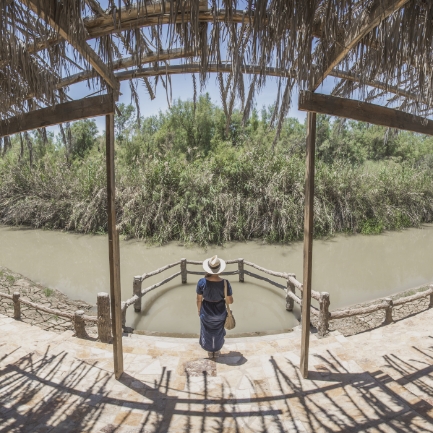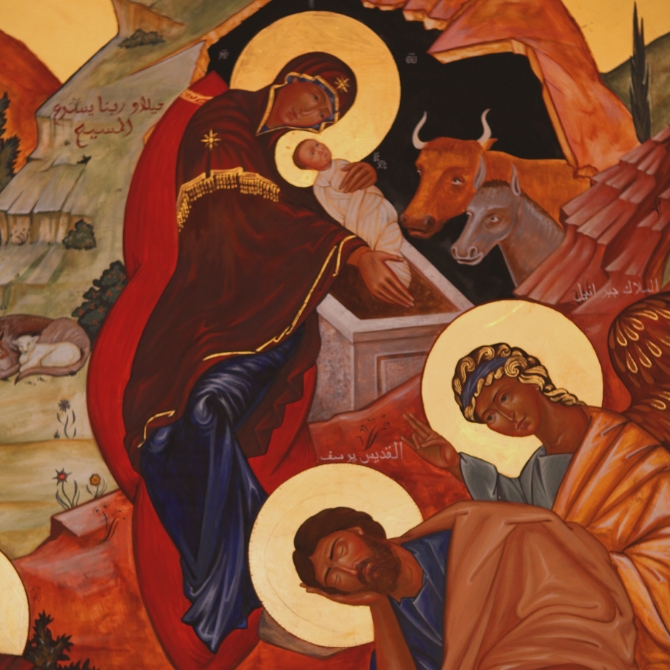
Researchers and historians have increased interest in the medieval Christian pilgrimage movement by studying what is known as the literature of journeys "Descriptive Pilgrimage", through which the pilgrim describes his journey through holy lands. These writings have been distinguished by their religious language, which illustrates the sanctity and spiritual significance of the place. These writings were written on papyrus by the pilgrim himself or his accompanying person. It serves as a book or guide for every Christian pilgrim in subsequent periods. The style of writing varied from one pilgrim to another according to his literary culture and social status.


Christianity embraced the theory of the spiritual and religious vision of pilgrims, and this was evident in Jerome's recordings of the experience of Paulina-Paula-Iestochem and St. Salvia and their pilgrimage journey to sacred lands in the 4th century AD. Because every pilgrim was unique, the recording of his journey was also unique, these recordings were for the time they wrote, the place he wrote about, and also for the viewers who spoke. They reached out to people, events, and the Lord they represent.
The vivid sighting of the holy places related to Mr. Christ is for the pilgrim the highest degree of faith and proximity to God, and this was evident through the anecdotal method adopted by Egeria when participated her sisters in the faith (the sisters of love) in visualizing the holy places she visited. The need was that Egeria believed in the idea that God was with her wherever she went, which was a powerful motivation for her to continue her difficult journey.
Pilgrimage literature based on Aura Lemoir's study is divided into three sections: the first section depends either on the pilgrim's own writings through his own perspective or on the writings of a person accompanying the pilgrim who heard and recorded in writing the pilgrim's statements. The second section relies on the writing and guiding method of the pilgrimage that he used to describe the holy sites. For the Third Section is about the pilgrim's use of the method of writing shortlists of the places he visited.
Section I texts receive the attention of researchers and historians because they speak of the places visited by the pilgrim and their impact on the reader, including the writings of the pilgrim, Nigeria (381.384m) which was in the form of a letter to a group of women in her home country, they are believed to be nuns, using the journalistic method of writing, being the first speaker and juvenile analyst, a happy traveler who moved from place to place and is free to write.
Jerome's writings depended on describing the pilgrim Paula for her journey (385-386 AD) to the Holy Lands, which included Egypt, Wadi al-Natrun, to Jerusalem, then moving to it and residing there until her death, by writing to her daughter, Istochem, dating to 404 AD.
Among the pilgrims who relied on the first genre of literature was St. Peter's of Iberia, whose biography was written by his disciple, Priest John Rufus (476-518m), Bishop Pichanza, known as Antonius Martyr, and Bishop Adumnan (700m), Bishop of the Abbey of Abona, whose journey was based on the writings of St. Arcolf, and the martyr Willybald (724-728 AD), wrote a biography of his life before the death of monk Hogobork, as well as preacher Bernard in 870 AD.
Some of these writings were in the form of a letter such as Egeria and Jerome, while others were in the form of a biography aimed at demonstrating a chapter of the monk's, saint's, or pilgrim's spiritual-religious life as he traveled to the Holy Land.
The second section of the pilgrims' literature in the description of sacred lands is used to mention the pilgrim in his recordings of religious sites and the distances traveled as a guide for every Christian pilgrim. Among the most famous books in this field were El Haj Bordeaux and then Yoshirios (434-449), Bishop Leof Lyon Theodosius (530), St. Ipanus who arrived in the Holy Land in 692, and St. Bedi in (702).
We find the third section of the pilgrims' literature in a booklet describing the pilgrimage to the Holy Land and the Places of the Saints, entitled "PRIFARIOS ", which the Pilgrim Adumnan later relied on as a guide during his pilgrimage to the Holy Land. An example of this section is also a document known as the "Diary about the churches and Monasteries of the Holy House", which was written to Emperor Charlemagne in 808 and contains a description of the churches and monasteries of the Holy House, as well as the names of the clergy and their number in those religious institutions. This intensive value is due to the policy of religious tolerance shown by Muslims under Harun al-Rashid towards Christian pilgrims and the facilities offered to them, prompting King Charlemagne to exchange souvenirs with the Abbasi caliph. This document is located in the Basel Library in Switzerland.

The first written document was from the Pilgrim Bordeaux, which casts a shadow over the later novelistic style of Egeria. However, Bordeaux's writings, as Hunt describes them, were characterized by the immobility of the narrative, in contrast to the benevolent and Christian-spirited message of Egeria by a Christian traveler. Robert Wilkin also described Bordeaux's writings as "a brief, succinct narrative, noting where he went, what he saw, where the horses changed, the distance traveled from place to place, in short the book contains no interest in theology as it is randomly transmitted from place to place with no hierarchy of place." .
Bordeaux's descriptive writings are d
Read more ...
The Pilgrimage became famous among aristocratic women in particular, and middle-class women in general, in the Middle Ages, and it had an impact on the pilgrimage textual literature. In this section we will present two types of pilgrimage textual literature, through Egeria's Letter to the sisters of Love, and Jerome's Letter to Paula Astuchem's daughter No. 108, one of the many letters of St. Jerome.
Empress Helena's visit to the Holy Land considers the beginning of a new era of Christianity, encouraging the aristocracy of the women of Rome to visit holy places in Judea, Jordan, and Galilee, as well as the monastic centers in Egypt, most notably s the pilgrim Greater Melani
Read more ...
